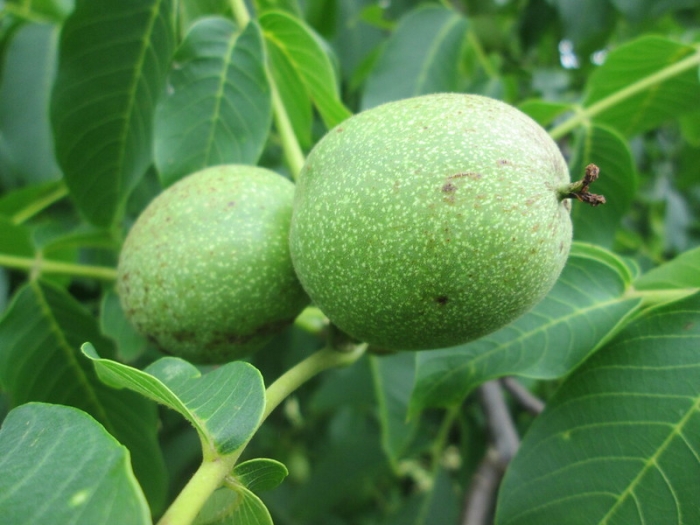English Walnut
(Juglans regia)
English Walnut (Juglans regia)
/
/

Andreas Rockstein
CC BY-SA 2.0














































































Estimated Native Range
Summary
The English Walnut is valued for its edible nuts and is often cultivated in orchards for commercial nut production. It is also planted as a shade tree in parks and large gardens. The tree’s ability to produce juglone, a natural herbicide, can be both a benefit and a drawback, as it can prevent the growth of other plants underneath its canopy. This species requires full sun and long summers, thriving in rich, deep soils with good drainage. While it prefers high amounts of water, it is also relatively drought-tolerant once established. Gardeners should be aware that English Walnut can be invasive in some regions outside its native range, and its cultivation should be carefully considered.CC BY-SA 4.0
Plant Description
- Plant Type: Tree
- Height: 80-120 feet
- Width: 40-60 feet
- Growth Rate: Rapid
- Flower Color: N/A
- Flowering Season: Spring
- Leaf Retention: Deciduous
Growth Requirements
- Sun: Full Sun
- Water: Medium
- Drainage: Medium
Common Uses
Bee Garden, Bird Garden, Butterfly Garden, Deer Resistant, Edible*Disclaimer: Easyscape's listed plant edibility is for informational use. Always verify the safety and proper identification of any plant before consumption., Fragrant
Natural Habitat
Originally from mountainous forests in Western and Central Asia, as well as the Middle East
Other Names
Common Names: Carpathian Walnut, Persian Walnut, Madeira Walnut, Common Walnut, Valnød, Echte Walnuß, Walnussbaum, Nogal Común, Nogal Europeo, Nogal Inglés
Scientific Names: , Juglans regia, Juglans sinensis, Juglans fallax, Juglans regia subsp. kamaonica, Juglans regia var. orientis, Juglans regia var. kamaonia, Juglans regia var. laciniata, Juglans duclouxiana, Juglans intermedia
GBIF Accepted Name: Juglans regia L.